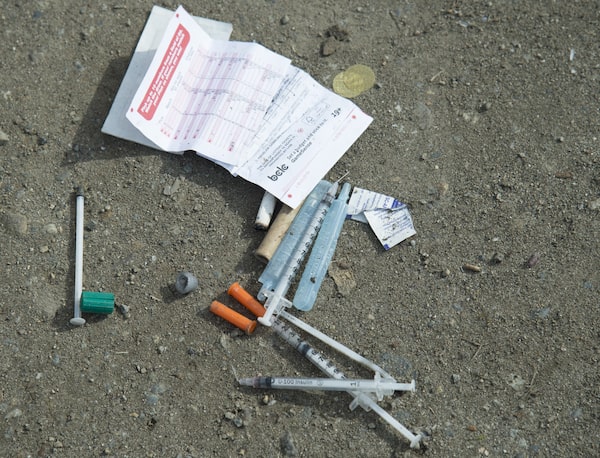
There were 16 drug poisoning deaths among children and youth under government care or receiving supports in 2022-23 and 12 in 2021-22, according to an investigation by Alberta's Office of the Child and Youth Advocate.JONATHAN HAYWARD/The Canadian Press
Drug poisonings among children and youth under government care or receiving government supports is one of the most frequent causes of death in recent investigations undertaken by Alberta’s Office of the Child and Youth Advocate, which concluded some of the deceased began using illicit substances as young as 12.
Child and Youth Advocate Terri Pelton released the findings of 48 investigative reviews Tuesday, spanning from April, 2023, to March 31, 2024, and involving young people in the province who were receiving child intervention services at the time of or within two years of their death and one youth who was seriously injured. In 10 of the cases, the person died from toxic drugs.
“It’s really a crisis,” Ms. Pelton said. She said the number of deaths linked to drug poisonings are expected to be “much higher” when investigations into all of the 83 notifications of death or serious injury received in 2023-24 are completed. Fifteen investigative reviews are on hold owing to police investigations and court proceedings.
There were 16 drug poisoning deaths among children and youth under government care or receiving supports in 2022-23 and 12 in 2021-22.
Among the 47 young people whose deaths were reviewed was two-year-old Nolan who died from methamphetamine toxicity with neglect and severe malnutrition as contributing factors. Nolan, described as a First Nation toddler who liked to be cuddled, was found dead with his mother, who died from complications related to unmanaged diabetes.
Alberta addiction recovery conference focuses on recovery-focused drug policy
There is also 16-year-old Tara and 17-year-old Jonah, both Indigenous adolescents who fatally overdosed on fentanyl and methamphetamine. Tara left home at 12 because of conflict with her parents and caseworkers later found out she began using substances and had witnessed a physical assault. Also at 12, Jonah was diagnosed with a mild cognitive delay and shortly after began to misuse over-the-counter medication and marijuana.
Thirty-five of the 47 who died were Indigenous. The findings will inform a report, complete with recommendations to government, which is expected to be released later this year.
Ms. Pelton said drug-related deaths are preventable and not enough is being done to address youth consumption and overdoses. Her office recommended in 2021 that the province establish a dedicated body, such as a committee or commission, to develop and implement a youth opioid and substance strategy. Ms. Pelton said that has yet to be done.
“As a child and youth advocate, I just have to keep pushing for that strategy,” she said. “Today’s kids are our future and if we can’t meet with pediatricians and addictions specialists with youth, then we’re not going to see a change.”
She said those experts and young people should inform any strategy.
The child and youth advocate added that conversations between her office and the government have been “kind of hit and miss.”
Alberta Addictions Minister Dan Williams, at a news conference Tuesday, pointed to the province’s virtual opioid dependency program, which works with pharmacies to provide same-day medication for substance use treatment, as one way of addressing the issue. He also pointed to the province’s live-in addiction treatment facilities, called recovery communities, but only two of the nine planned are open and they are only available for people 18 and older.
He did not mention any supports specific to youth in government care.
Ms. Pelton said the virtual opioid dependency program is a great resource for young Albertans but isn’t sure how many are actually using it. The advocate added she is worried about the availability of harm reduction resources for young people and aftercare supports for people who have undergone treatment.
The government is implementing a recovery-focused model in Alberta, which focuses on spending for treatment and recovery services over harm reduction measures. Since the United Conservative Party took power in 2019, certain harm reduction supports have been limited, including supervised consumption spaces.
 Alanna Smith
Alanna Smith